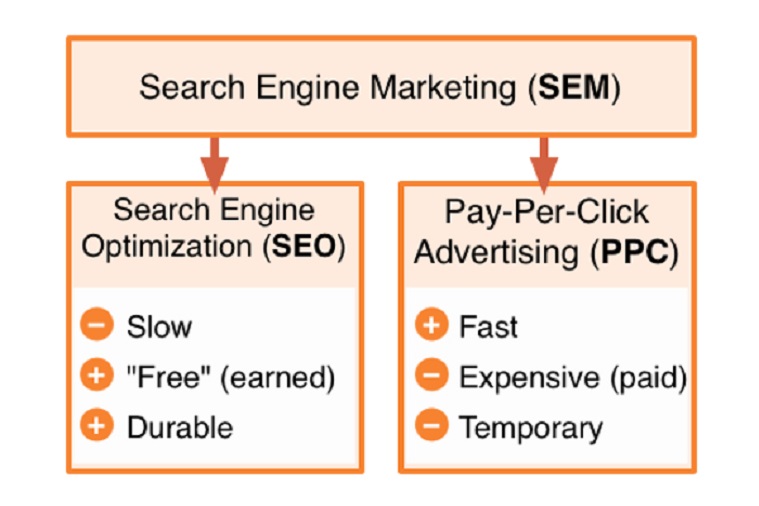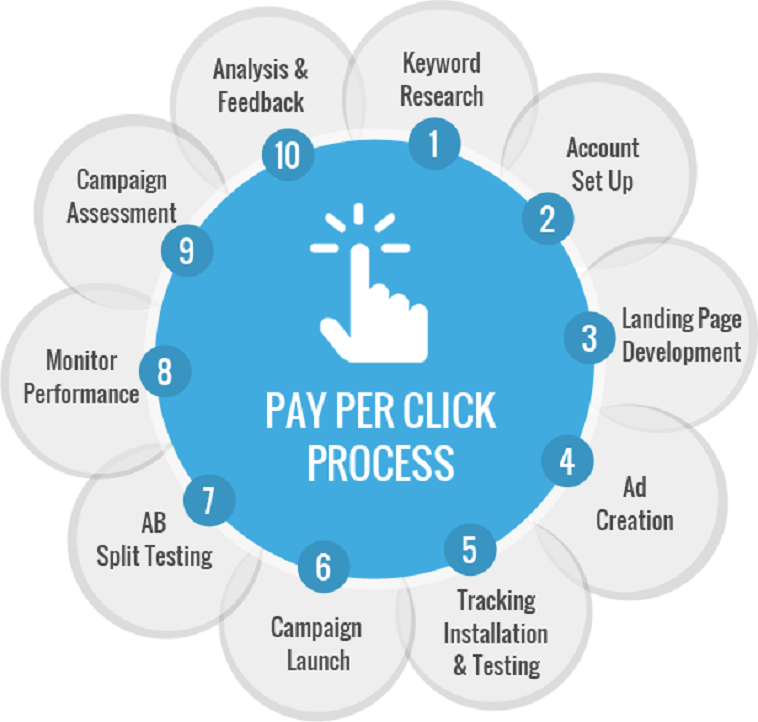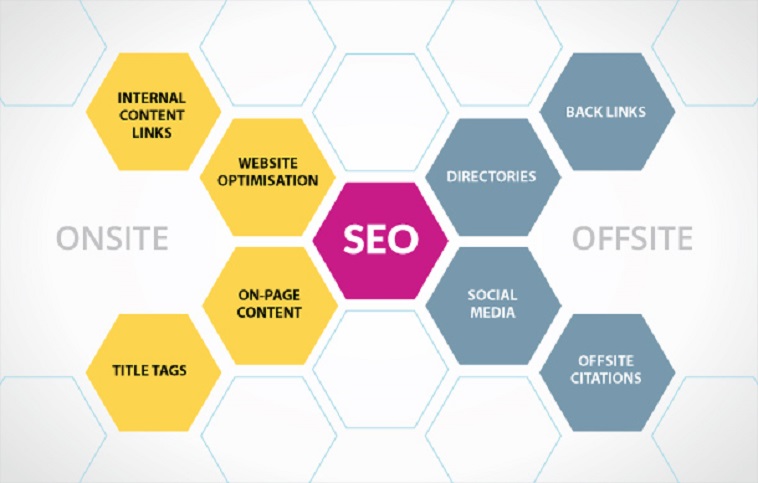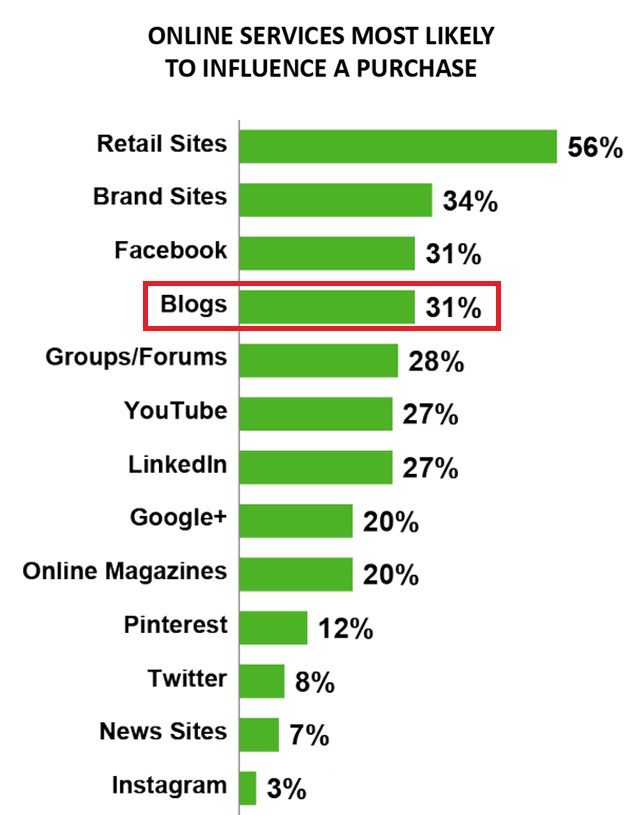How to start driving traffic to a newly created e-commerce website?
In today’s article, we’ll continue our series of tutorials on How to start an online shop, and we’ll give you some tips and suggestions for attracting visitors to your online store.
Regardless of the nature of your website, you have two main options for generating traffic: paid advertising and unpaid methods, which include content marketing, search engine optimization and social media marketing. Let’s discuss each of these in detail and see when and how to use each of them to make the most of your budget.
(SEO vs. PPC. Image source: olatunjiadetunji.seowebanalyst.com)
Driving traffic to an online shop through paid advertising
Paid advertising may not be the most attractive solution, but if you’re just starting with your online store, you may want to invest in AdWords campaigns or Facebook ads at least until you start gaining some visibility. When running PPC campaigns it’s easy to set a budget and stick with it, so you won’t have to worry about spending more than you have. However, you should hire someone who’s very good at this, just to make sure that your PPC budget is spent in the best way possible.
Bids for some keywords can be more expensive than for others, and an experienced advertiser will know when and how to adjust the campaign to get you most of it. Same applies to Facebook ads: you can start with more campaigns for traffic, or for conversions, or for brand awareness only, and adjust them after a few days, based on results.
How to use paid advertising
The way paid advertising works is very simple: in AdWords for example you bid for specific keywords, and your page is displayed in search results in the first positions, in the section dedicated to advertisements, or lower on the page (also in dedicated sections), depending on your bid and on competition. Although there’s no guarantee that your ads will be displayed only to the most relevant users, you can maximize the efficiency of your PPC campaigns by choosing both longer and shorter keywords and mixing brand with non-brand keywords.
Once you stop paying for those ads, they’ll no longer be displayed, so the paid traffic will decrease. You’ll be able to see this change in your analytics tool, and you’ll also be able to analyze the overall impact of your paid campaigns on brand awareness. If you’re starting to see an increase in organic traffic as well after a few months of paid advertising, it’s a sign that people are starting to know your brand and online store.
Besides the already mentioned Google PPC ads, you can also try Bing PPC ads, Facebook and Twitter ads, as well as advertisements on YouTube and Pinterest if your niche is suitable for these channels. This aspect is very important, as it’s not worth buying paid ads on a channel if your target public isn’t there.
For example, if you have an e-commerce website that sells accessories for cars, it may be better to invest in Google or Facebook ads than to buy Pinterest ads, as the chances to drive relevant traffic and get leads from Pinterest are, in this case, very low. On the other hand, if you sell shoes, clothes, jewelry, accessories, beauty products, fitness gear, decorative items and even kitchenware or other such items for home, it may be worth giving Pinterest ads a try.
(The PPC process. Image source: janbaskdigitaldesign.com)
Non-paid solutions for driving e-commerce traffic
Paid advertising is only one of the solutions you can include in your strategy for driving visitors to your e-commerce website. So if you don’t have a budget or you’re not willing to invest in paid campaigns, you can always rely on non-paid solutions, but keep in mind that these require more time and human resources in most cases.
Non-paid traffic drivers include content marketing, blog and content publishing, social media posting, blogger outreach and PR campaigns, marketing on forums and in online communities, as well as e-mail marketing (although this one can also be considered a paid solution in some cases).
Content marketing
Content marketing refers to promoting your online store by publishing and sharing content that is relevant for your target public. It can include blog articles, guest posts, e-books, free checklists or templates, as well as interviews, the content you publish on product pages or category pages, the static pages of your e-commerce website and so on. It can refer to written content but also to video, graphic and audio content, so if you have a very good designer for example in your team, you can include infographics in your content marketing campaigns.
(Image source: local-interactive.com)
If you’re in a niche that is suitable for video marketing, than you may want to create some branded videos, or product videos, and post them on your store’s YouTube channel. If your e-commerce website sells digital goods, you may want to consider offering some free downloads for generating leads and building your database of potential customers. Once you have their email addresses, you can initiate email marketing campaigns, or target those potential customers through newsletters and remarketing campaigns.
For an efficient content marketing plan, you will need to decide on what type of content you want to publish, when, for what purpose (traffic, leads) and how you’ll measure the results. This means you’ll need a content strategy plan, and this should take into consideration all the social media channels, the blog, and the content published on your product pages.
Search engine optimization
Along with content marketing, you’ll have to start planning your search engine optimization efforts. This means you should, ideally, have a list of targeted keywords before starting to build the website. If you haven’t included keywords in the meta elements of your webshop’s pages yet, you’ll have to put aside the time for this, and really do your website to optimize all category and product pages for specific keywords.
Of course, this will take a lot of time if you have a large store, but in the long run it can boost your organic traffic and bring you constant visitors and customers, so it’s worth investing in SEO for sure. Don’t forget that SEO includes both on-site and off-site optimization, so once you’re done optimizing your e-commerce website pages, you’ll have to start planning the off-site SEO efforts as well. What does this mean, more exactly?
To keep things simpler, you can start only with local optimization and link building. The former takes less time and it’s done only once, but the latter can take a lot of time, so it’s recommended to hire a professional to take care of the link building process.
(Image source: seoagency.com.sg)
Blogger outreach and PR campaigns
Getting other bloggers to write about your products can be a good starting point as well, so you should invest some time in researching the influencers and microinfluencers in your niche, and then see which of them is open for a collaboration. Reach out to those bloggers who already have a following and could influence their readers or see if they’re interested in a giveaway. Offering free samples is always a good idea for generating some traffic to a newly created e-commerce website.
Then, the classical press releases and PR efforts can still work in your favor, but some may require a budget. Websites like Help a Reporter Out for example may be useful if you don’t want to invest that much in PR, as there are plenty of journalists there who are always interested in doing interviews with entrepreneurs and business owners.
(Image source: moz.com)
Forums, communities and offline events
The easiest way to make people come to you is to go where they are and show them that your products solve a burning problem of theirs. Your target public is very likely to be present on forums, in online and offline communities, at relevant events in your area, so once you’ve launched your webshop, do your best to be present in all these places as often as possible.
Search for relevant forums with active users and find topics you can add value to, while promoting your services or products. Don’t just go on forums or in online groups or communities to share your links – this is spam and is not appreciated at all. Instead, find topics that are relevant for your niche and important for your target public, and try to post answers and opinions that can help readers.
For example if you have an online store that sells bikes, you could join some biking communities and be present at relevant events, inviting people to test your products, or organizing contests with small but valuable prizes. It’s a lot easier to spread the word about your website if you manage to turn a few of your clients or target visitors into brand advocates and promoters of your webshop.
We hope you’ll find this article useful. If you have questions or comments, post them below and we’ll gladly answer!
Source https://cloudcart.com/blog/driving-traffic-ecommerce-website/







![[Prestashop tips] Use SMS Marketing to Drive Traffic, Increase Sales & Boost Engagement for Prestashop?](https://buy-addons.com/blog/wp-content/uploads/2019/04/sms-marketing-statistics-3-120x120.jpg)

![[Prestashop tips] Add a flag icon nearby language name in Prestashop Store](https://buy-addons.com/blog/wp-content/uploads/2019/01/01-120x120.png)

Leave a reply
You must be logged in to post a comment.